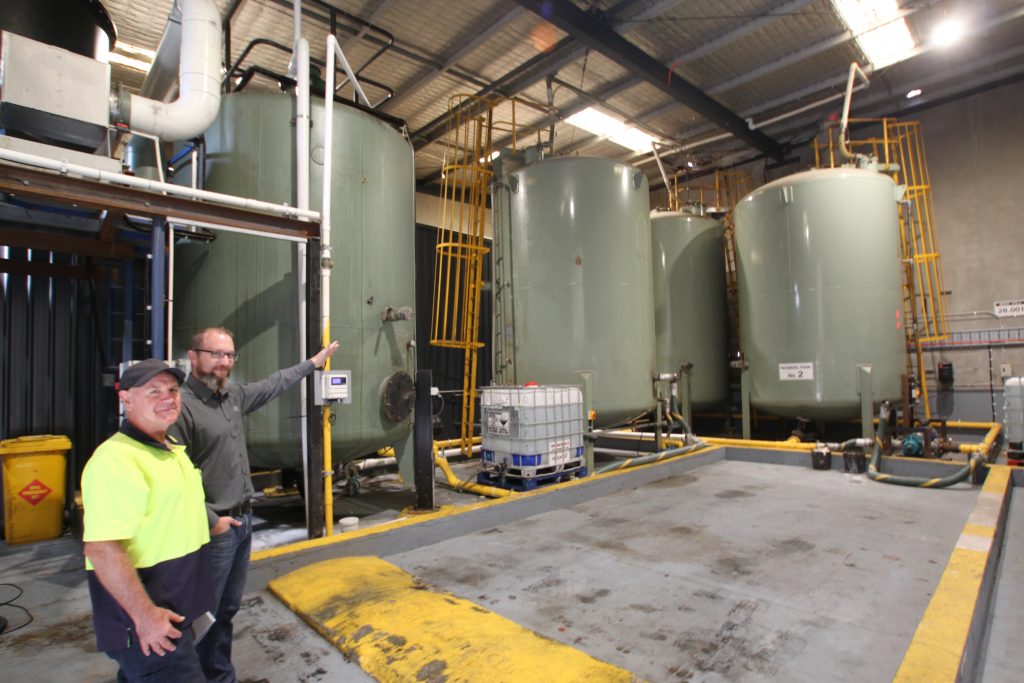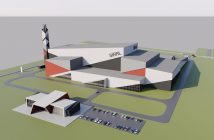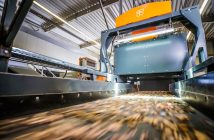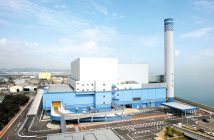Leader in waste management is running an environmental initiative that eliminates landfill dumping of commercial and retail food waste by transforming it into valuable green energy and fertiliser

JJ Richards & Sons’ (JJR) custom-engineered waste reception centre in Sydney has the potential to become a model for national use both in New Zealand and Australia.
The centre turns pulped waste from its partner Pulpmaster’s collection tankers into an easily handled and valuable resource for use in agriculture, horticulture and fossil fuel replacement.
The plant already handles bulk waste from major customers including supermarkets, food shops, hospitals, schools and catering facilities.
It uses CST Wastewater Solutions’ KDS multi-disc fine screening and compaction technology as part of an automated process which turns the pulped waste collected into a cake form that is more than 50 percent lighter and dryer than the pulp. It then can be transported to users at about half the cost of heavier and less hygienic output.
Waste producers using the system are reducing the environmental impact and get monthly reports on how much they are saving on disposal costs.
The processed material is used by farms and other agricultural enterprises as high-potency fertiliser and for the production of biogas to reduce environment footprints, while boosting output with natural fertilisers and fossil fuel replacement green energy.
“The system not only disposes of an environmental headache and cost for responsible businesses – including high landfill costs and the high cost of transporting waste to somewhere remote, secure and non-harmful – but turns the problem into an environmental asset and a cost saver. says JJR NSW/ACT Operations Manager, Liquids, Ben Martis.
“Businesses love getting the reports on the environmental benefits of their waste disposal and recycling, because they can demonstrate benefits to the community, while also saving themselves substantial and measurable costs.
Martis has been deeply involved in the design and proving of the plant which features twin 28-ton filtrate receival tanks and similarly large vessels to process waste to the pH levels most ideal for recycling uses and injection into the ground as fertiliser.
The automated receival, processing and dispatch facility features high speed, drive-in pulp receival bays and treatment tanks for the thousands of tonnes of throughput delivered by Pulpmaster, which employs an environmentally friendly and cost-effective collection system that converts the mixed waste they collect into pulp slurry for further processing into organic fertiliser and biogas.
This slurry passes from the treatment tanks through ultra-fine (1mm) screening from CST Wastewater Solutions before passing through the KDS dewatering and liquid separation process. This transforms the sloppy pulp waste into a hygienic, compact and much lighter dewatered output that is easy to handle and costs 50 percent less than heavier wet waste to transport onwards to users of the output.
The compacted output is automatically fed into 35-ton slide-out waste handling bins for loading onto delivery vehicles.
The KDS system can be run continuously and reliably, with low energy consumption, to optimise output from the Hills plant.
“There is a lot to like about the KDS system,” says Martis. “It has very few moving parts, a high-efficiency dewatering operation, uses little energy and doesn’t break down. It is a quality system.”
In addition to custom-engineered applications such as JJR, the KDS system can also be skid-mounted to manage separation and compaction needs on remote sites.
“The transport and handling of non-processed mixed food waste can be a killer cost for business,” says ST Wastewater Solutions Engineer Peter Bambridge.
“Not only do you have the OH&S and environmental issues of handling and disposing of heavy, sloppy waste, but also just transporting such material to dumps can cost A$150 a ton for the specialised transport involved.
“Some of these dumps, by their very nature, have to be major distances from the urban source of the waste, so there are big costs involved.
Martis says the fact that the JJR system has been proven in NSW – which has some of the strictest waste handling regulations in Australia – suggests that it is also eminently suitable to other areas of the country and New Zealand.
“This is a proven system now. We are handling huge amounts of food waste already, and the potential beyond that is far huger still. We are proud of the engineering that has gone into this system and want to see its benefits spread wider and wider.”
Applications for the KDS separator include:
- Food processing waste, including snackfoods, kitchen and restaurant waste, raw wastewater (primary screening) and sludge
- Sewage treatment, including raw wastewater (primary screening) and sludge to landfill
- Abattoir, feedlots, and dairy farm wastewater and sludge. Cattle manure cake dryness of 25-35 per cent is typically achieved
- Pig farm raw manure and sludge, with cake dryness of 20-30 per cent.
- Barrel polishing water, water-based paint wastewater, grease trap waste, dyeing wastewater, waste oil, and plastic recycling.
- Seafood processing
JJ Richards and Pulpmaster
J.J. Richards & Sons Pty Ltd has been providing waste management solutions since 1932.
The company is committed to minimising the amount of waste disposed in landfills and has developed several pioneering techniques in waste management systems.
Pulpmaster Australia, operates an environmentally friendly and cost-effective fleet using a system which eliminates huge quantities of food waste from commercial establishments by converting the waste into pulp. The pulp slurry is then collected and processed into an organic fertiliser and biogas.
Contact Michael Bambridge, Managing Director, CST Wastewater Solutions
+61 2 9417 361, [email protected], www.cstwastewater.com
or New Zealand country manager Pieter Groenewegen, +64 21 645 647.




